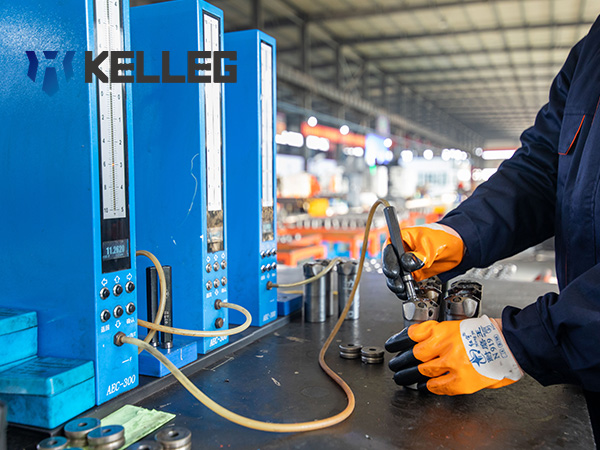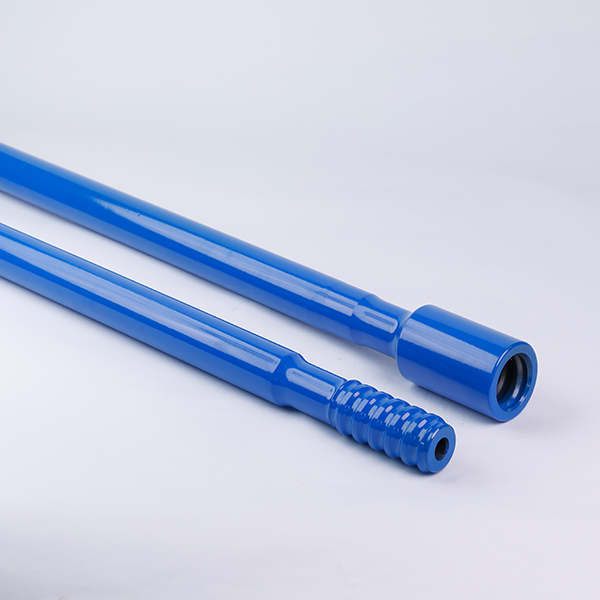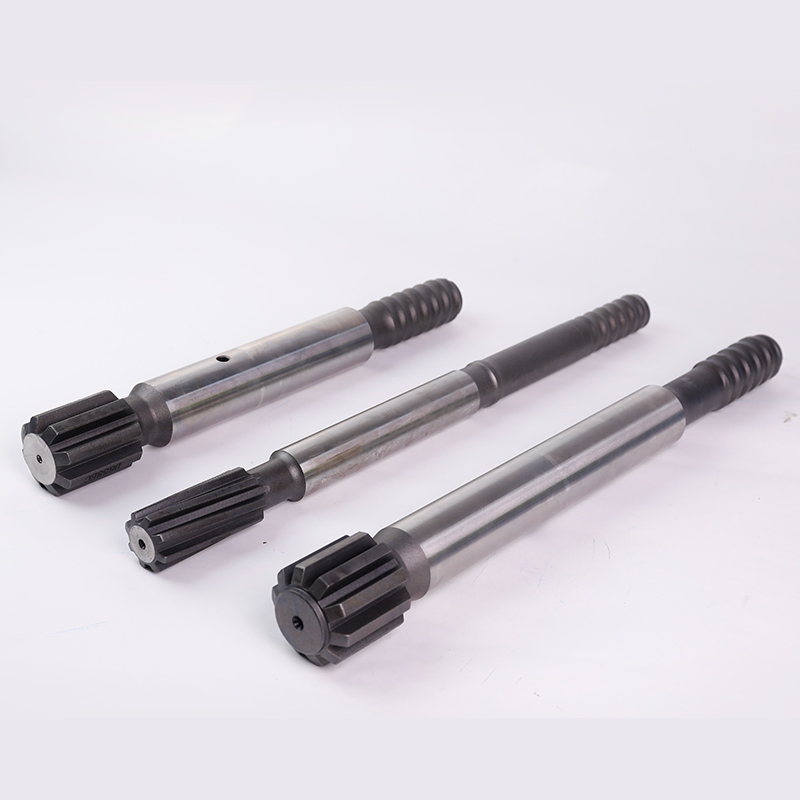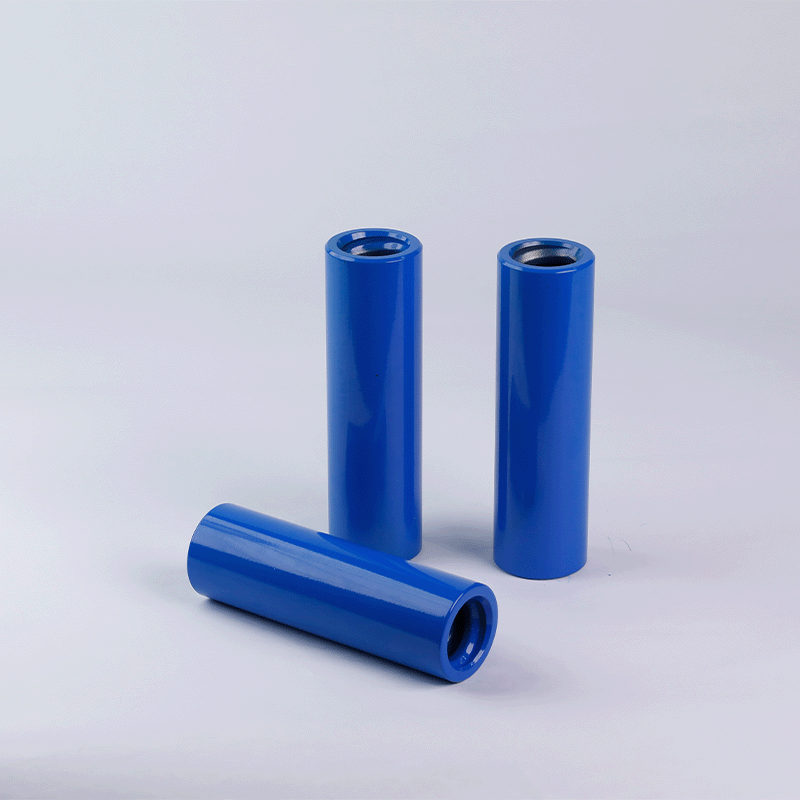Introduction
| Introduction to Tungsten Carbide Grades | |||||
| Grade | International Standard | Performance | Scope of Application | ||
| Density | Hardness | Flexural strength | |||
| g/cm³ | HRA≥ | n/mm³≥ | |||
| YG8C | MK10~K20 | 14.7 | 89 | ≥3000 | Primarily used as button for small-to-medium impact drill bits and alloy inserts for rotary exploration drill tools, for drilling through soft rock and medium-hard rock formations. |
| YG9C | K30 | 14.6 | 88.8 | ≥3100 | Suitable for drill bits in percussion rotary drills, ball teeth for shield machine cutters, and button for mining roller bit drills, for drilling through soft rock and medium-hard rock formations. |
| YG11C | K40 | 14.4 | 88.8 | ≥3300 | Primarily used as bits, ball teeth, shield machine cutter heads for percussion and roller cone drilling tools, for drilling medium-hard rock, hard rock, and extremely hard rock formations. |
| YG13C | K40 | 14.2 | 86.5 | ≥3500 | Primarily used as roller cone drill ball teeth, percussion rotary drill bits, shield machine cutter heads, for drilling hard rock and extremely hard rock formations. |
| YG15C | K40 | 14 | 86.5 | ≥3800 | Suitable for manufacturing petroleum roller cone drill bits, for drilling medium-soft and medium-hard rock formations. |
In rock drilling operations, selecting the right cemented carbide grade is not just a technical detail—it’s a strategic decision that can directly affect your drilling performance, tool longevity, and overall project cost. With varying geological conditions and drilling methods, using the wrong carbide grade can lead to premature tool failure, increased downtime, and unnecessary expenses.
The proper grade selection ensures your rock drilling tools strike the right balance between hardness and toughness, allowing them to perform effectively in specific rock formations. This directly impacts drilling speed, wear resistance, and the number of tool replacements required over the service life of a project.
This guide will walk you through the key considerations for choosing the most suitable cemented carbide grade for your application.
Understanding Cemented Carbide Grades

A "grade" in cemented carbide refers to the specific combination of tungsten carbide (WC) particles, cobalt (Co) binder content, and grain size—each carefully engineered to achieve a desired balance between hardness, toughness, and wear resistance.
Cemented carbide is a composite material, typically composed of:
- Tungsten carbide, which provides exceptional hardness and abrasion resistance.
- Cobalt binder, which adds toughness and helps the structure absorb impact.
- Grain size, which affects both mechanical strength and wear behavior.
Different grades are created by varying the ratio of cobalt to tungsten carbide and adjusting the grain size of the WC particles. For example:
- A high cobalt content with coarse grains results in a tougher material that resists breakage under impact.
- A low cobalt content with fine grains increases hardness and wear resistance, ideal for abrasive but stable drilling conditions.
However, higher hardness improves wear resistance but reduces toughness, increasing the risk of chipping or fracture in shock-loading environments. Greater toughness increases resistance to breakage but can reduce wear life, especially in abrasive rock.
Understanding this balance is key to choosing the right grade for your specific drilling environment. The wrong choice can lead to poor performance, shorter tool service life, or even catastrophic failure in extreme conditions.
Grade Performance Characteristics

Cemented carbide grades are engineered by adjusting three main variables: hardness, toughness, and microstructure (including grain size and cobalt content). Understanding how these characteristics affect drilling performance is key to selecting the right grade for your application.
High-Hardness Grades
Carbide grades with high hardness offer excellent wear resistance, making them ideal for abrasive rock formations such as sandstone or quartzite. These grades are typically formulated with fine tungsten carbide grains and lower cobalt content.
- Advantages: Long tool service life in abrasive environments; maintains cutting edge sharpness
- Limitations: More brittle under heavy impact; higher risk of chipping or fracture in fractured or high-shock formations
High-Toughness Grades
High-toughness grades are designed to withstand repeated impact and dynamic loads, making them suitable for percussive drilling in fractured, hard rock, or variable formations. These grades often feature coarser grains and higher cobalt content to absorb energy without cracking.
- Advantages: High resistance to breakage; reliable in tough, shock-prone environments
- Limitations: May wear faster under abrasive conditions
Coarse vs. Fine Grain Structure
- Coarse-grained WC improves fracture toughness and impact resistance, recommended for high-impact tools like button bits in DTH drilling.
- Fine-grained WC enhances hardness and abrasion resistance, better for rotary tools or precision drilling in less demanding environments.
Cobalt Content and Its Effects
Cobalt acts as a metallic binder that holds the tungsten carbide grains together and influences overall toughness:
- Higher cobalt content (10–15%) improves ductility and impact strength, suitable for applications with high stress or vibration
- Lower cobalt content (6–9%) enhances hardness and wear resistance, ideal for stable, abrasive rock where impact loads are lower
However, increasing cobalt content slightly reduces hardness, so finding the right balance is crucial.
How to Select Cemented Carbide Grades for Rock and Oil Drilling Applications
Cemented Carbide Selection for Impact Rock Drilling

When selecting cemented carbide grades for rock drilling tools, impact conditions and rock properties must be the primary considerations. Impact drilling requires carbide materials that combine high wear resistance with sufficient toughness to withstand cyclic and percussive loads.
1. Based on Rock Hardness and Composition
- Rocks with higher hardness and stronger abrasiveness demand high-cobalt, coarse-grained carbide grades such as YG13C or YG15. which offer improved toughness and resistance to fracture.
- For medium or lower hardness rocks, medium-cobalt, coarse-grained grades like YG6. YG8. or YG8C are often sufficient, offering a balanced performance at a more economical cost.
2. Based on Rock Drill Impact Energy
Drilling tools are exposed to multiple stress types during operation—including tensile, compressive, bending, and torsional stress. For high-impact rock drills or extremely hard formations, the carbide should prioritize toughness, typically achieved with higher cobalt content.
On the other hand, for abrasive yet brittle rocks, where high wear resistance is key, lower cobalt grades with finer WC grain structures are recommended. It’s essential to align the carbide grade with the drill’s impact energy:
- Low impact energy requires better efficiency in energy transfer to break rock, favoring chip bits.
- High impact energy may cause excessive crushing and energy waste if not matched with the correct bit and carbide grade.
3. Based on Drill Bit Geometry
The type and shape of the drill bit directly affect carbide wear patterns and loading:
- Chip Bits: These bits concentrate impact loads on smaller areas. The outer carbides wear faster and face a higher risk of breakage due to concentrated stress, requiring high-toughness grades with higher cobalt content and coarser WC grains.
- Button Bits: Carbides are more evenly distributed, leading to balanced loading and more uniform wear. These buttons cover a larger contact area, reducing per-unit impact. As a result, finer WC grains and lower cobalt content can be used, especially in gauge and center buttons. Button bits are particularly well-suited for hydraulic rock drills with high impact energy, but may wear faster in extremely abrasive rock compared to chip bits.
Cemented Carbide Grades for Oil Drilling Tools

In oil drilling, carbide failure typically occurs at the well bottom, often due to combined wear and impact. Therefore, carbide used in this field must emphasize wear resistance built upon adequate toughness.
Preferred grades include:
YG8C, YG11C, YG13C — high cobalt content and coarse WC grain to enhance durability under complex stress and temperature conditions.
When selecting carbide for oil drilling, the following factors should also be considered:
- Rock properties: hardness, abrasiveness, grain size, compactness, and fissure distribution
- Drill type and design
- Rock-breaking method: air pressure or hydraulic energy
- Equipment power and capacity
Conclusion
Choosing the right cemented carbide grade is a critical factor in the success of any rock drilling operation. A well-matched grade not only extends tool service life but also improves penetration rate, enhances drilling efficiency, and reduces overall operational costs.
We encourage customers to carefully evaluate their rock formations, drilling methods, and operating environments when selecting carbide grades. Partnering with an experienced carbide supplier can also provide valuable technical guidance and customization options to ensure the best results for your application.





